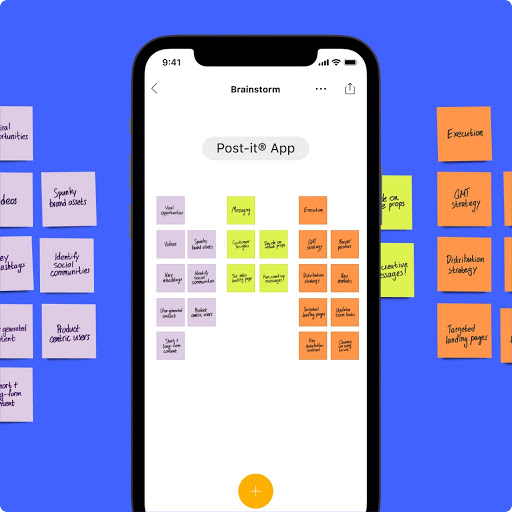Provide answers validated by your users in just 5 days and meet your business challenges? It was already amazing, wasn't it? And yet this methodology has not finished innovating and surprising.
The principle of Design Sprint
Originally launched in 2010 by Google Ventures and made extremely popular through the book “Sprint, How To Solve Big Problems and Test New Ideas In Just Five Days” by Jake Knapp.
We used to book a room and bring together a team of 10 people to identify the problem, share ideas and create a prototype around pastries and drinks.
Sharpies and post-its, the good old days
Unfortunately, COVID-19 has turned our ways of working and our habits upside down. We had to adapt very quickly and find alternatives. It is in these moments when creativity, solidarity and innovation are bubbling. This is why the UX Designers had to adapt the workshops and ended up creating a hybrid version that mixes reality and the digital universe where tools, media, time and interactions were impacted.
As we reminded you above, a traditional Design Sprint generally takes 5 days. The health context and teleworking do not allow this traditional rhythm to be maintained. The hybrid version favors shorter sprints in order to keep the concentration of the participants to the maximum.
What are the novelties, the tools and the advantages that this hybrid alternative brings? Why could it become the norm? Don't move, we'll explain everything to you.
# What are the new features, tools and benefits?
The confinement and then the curfew imposed by COVID-19 was an opportunity for companies and teams to work and communicate differently. Every day, many solutions emerge, making daily life and information sharing easier.
Today, tools such as Miro, Klaxoon ou Mural meet the needs of the Design Sprint: a “room”, a whiteboard and post-its. In addition, these solutions implement new features to save time and focus only on the essential: creativity.
Mural, a collaborative visualization tool
Other advantages, the quality of restitution, forget the loss of post-its or the endless headache of proofreading. Moreover, these tools are available on all platforms and devices, everything is available at all times on the cloud. No more excuses for not following daily scrums or sprints.
Last novelty, Miro in collaboration with Post-It have just released a feature allowing you to transfer paper post-its to digital post-its simply using your smartphone's camera. Like what evolution is permanent, cool, right?
Post-it App, the application developed by Miro in collaboration with Post-It
These small innovations push to hybridize this methodology which has already conquered many companies and start-ups.
# What about the results: what can we expect?
Rest assured, on this part, nothing has really changed. The UX & UI designers work together remotely to design the prototypes resulting from the choices made during the previous sessions.
Example of a “high-fidelity” prototype
The principle therefore remains the same: to create a facade that is fairly close to reality. It must be understood that it is only and only this part that users will see in reality.
An example of building a test on Maze
Is the prototype validated? Then you are ready for the trial by fire: the tests.
Here too, they can be carried out remotely using tools such as Lookback, UserTesting or even Maze.
The advantage here is that all versions of the prototypes are archived, ideal for iterating or facilitating the creation of A/B Testing.
# Wrap-up & Conclusion
This epidemic has forced us to find new ways of working. More and more solutions and innovations are being made available to facilitate the transition from physical to digital. It is quite possible to carry out the different stages and workshops remotely.
The hybrid version brings advantages: no loss, elements recoverable at any time and the importance of the workshops from a sociability point of view, which makes them fun and memorable! Moreover, we have noticed that the handling of new digital tools has been remarkably well received and assimilated by all generations and in all sectors of activity.
The health crisis has allowed us to open up new perspectives in terms of mastering and carrying out remote workshops. It reduces borders and travel costs, which are often very costly for companies. Who knows, maybe reconsider our travels and be aware of their impact on the planet?
Small negative note, all the same, at UX Republic, we miss the design sprints where we were all around a table in a room. In our view, presence remains important in the phases of ideation and decision-making when it comes to confronting ideas or choosing a solution.
But, it goes without saying that the future holds surprises for us.
What a time to be alive.
# Our offers
With 8 years of existence, UX-Republic accompanies you on all your projects. We continue to meet your needs and achieve your goals in this difficult health environment.
We have hybrid Design Sprint solutions where we offer remote workshops, to learn more, click here.
# Bonus: Why and when to launch a Design Sprint?
There is a time for everything and the Design Sprint is no exception. We quickly explain to you why and when you should use this methodology.
You want to provide answers to an identified problem, to a defined objective or when your project is blocked. It can be useful for example for:
- Evaluate the viability of a new business or relaunch a project, product or service.
- Reflect on a specific area or discover new features of a product.
- Define new marketing strategies or engage new audiences.
Conversely, it is only preferable to launch a design sprint when :
- You want to cover all aspects of a complex product or service in a single sprint.
- You want to explore several hypotheses and use cases. As a reminder, a design sprint has a maximum duration of one week.
- The problem is not clearly defined. You have to be sure to clarify your problem, you need to identify a business goal and a customer need.
Sébastien Marteaux UX @UX-Republic
Our next trainings
STORYTELLING: THE ART OF CONVINCING # Paris
SMILE Paris
163 quay of Doctor Dervaux 92600 Asnières-sur-Seine
UX/UI ECO-DESIGN # Paris
SMILE Paris
163 quay of Doctor Dervaux 92600 Asnières-sur-Seine
DESIGN THINKING: CREATING INNOVATION # Belgium
UX-REPUBLIC Belgium
12 avenue de Broqueville - 1150 Woluwe-Saint-Pierre
MANAGING AND MEASURING UX # Paris
SMILE Paris
163 quay of Doctor Dervaux 92600 Asnières-sur-Seine
DESIGN SPRINT: INITIATION & FACILITATION # Paris
SMILE Paris
163 quay of Doctor Dervaux 92600 Asnières-sur-Seine
UX-DESIGN: THE FUNDAMENTALS # Belgium
UX-REPUBLIC Belgium
12 avenue de Broqueville - 1150 Woluwe-Saint-Pierre
GOOGLE ANALYTICS 4 #Paris
SMILE Paris
163 quay of Doctor Dervaux 92600 Asnières-sur-Seine
ACCESSIBLE UX/UI DESIGN # Belgium
UX-REPUBLIC Belgium
12 avenue de Broqueville - 1150 Woluwe-Saint-Pierre


















